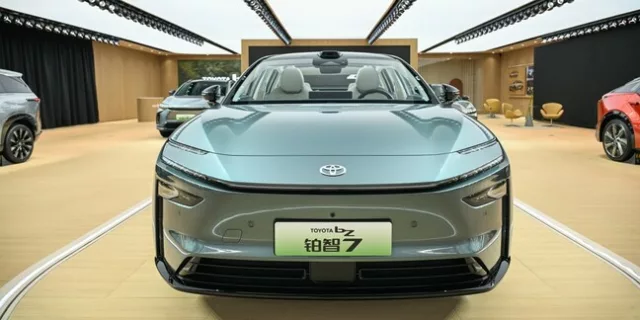Asia In Brief Toyota last week launched a range of electric vehicles in China, one of which use Huawei’s HarmonyOS
The Japanese automaker announced its new made-for-China range at last week’s Shanghai Auto Show, the star of which was arguably the bZ7, Toyota’s first electric sedan designed solely for the Chinese market.
Toyota said its approach to building cars for the Middle Kingdom has shifted “from adapting to China to being defined by China” and its new cars therefore include local innovation – including HarmonyOS, the operating system Huawei created to break its dependence on Android.
Huawei built HarmonyOS to on smartphones, tablets, smart TVs and more, with a single account meaning users enjoy a consistent and connected user experience across all devices.
Toyota isn’t a big player in China’s car industry. But its decision to use HarmonyOS suggests the Japanese giant believes Huawei will be.
SK Telecom replacing customer SIMs after cyberattack
Korea’s SK Telecom last week admitted details of customers’ SIM cards leaked after a malware attack. The carrier SK Telecom said it “immediately deleted the malware after recognizing the possibility of a leak, and also isolated the suspected hacking device.”
To date, the company hasn’t detected exploitation of the leaked info but is clearly awake to the possibility of SIM swapping attacks because it’s replacing customer SIMs at no cost.
Korean media report that over five million customers – about a quarter of SK Telecom subscribers – have already applied for the free SIMs. The carrier has apologized and warned subscribers demand for replacement SIMs may be so high that they should consider making an appointment at one of its retail outlets.
China to green its datacenters
Eleven Chinese government agencies last week issued “Key Points for Digital Greening and Collaborative Transformation and Development in 2025”.
The 22-point plan calls for “green transformation of data centers, promoting the green operation of base stations, promoting the green manufacturing and use of electronic information products, and guiding the zero-carbon development of leading digital technology companies.”
Beijing also wants digital tech to help other industries to “accelerate green transformation” across the electricity, mining, metallurgy, petrochemicals, transportation and logistics, construction, urban operation, and modern agriculture sectors.
Also in China, the nation’s China’s Cyberspace Administration announced a program to improve digital literacy.
India docks sats in space, again
Readers may remember that in January India’s space program became the fourth to dock a pair of orbiting satellites.
Last week the Indian Space Research Organisation (ISRO) annnounced it repeated the exercise, this time after bringing the two SPADEX satellites to within 15 meters of each other and allowing autonomous systems to handle the final docking.
“The experiment involved operating a heater element in one of the satellites through power from the other satellite. The duration of power transfer was approximately 4 minutes and the performance of the satellites was as expected,” IRSO stated.
China refreshes space station crew
China’s crewed space program notched up another success last Friday after launching a crew of three to its Tiangong space station. The three new arrivals on Sunday participated in a handover ceremony that will see them assume control of the station once the current crew return to Earth.
Ahead of the launch Chinese state media reported good progress towards a future moon landing.
The Long March-10 rocket, crewed spacecraft, the lunar lander, the moon-landing spacesuit and the crewed lunar rover “are all in a stage of prototype research and development testing, as planned.”
Chinese officials also revealed that Taikonauts from Hong Kong and Macau have been selected for future flights, a notable expression of China’s “One country, two systems” policy.
Grab touts AI successes
Singapore-based ridesharing giant and ”superapp” operator Grab has revealed it created standard operating procedure-driven LLM agent frameworks that have helped it to automate some business processes.
“Initial evaluations have shown remarkable results, with over 99.8 percent accuracy in real-world use cases,” members of the company’s engineering team wrote last week. “For example, the framework has powered solutions like the Account Takeover Investigations (ATI) bot, which achieved a 0 false rate while reducing investigation time from 23 minutes to just 3, automating 87 percent of cases.”
A fraud investigation use case that used the frameworks “reduced the average handling time by 45 percent , saving over 300 man-hours monthly with a 0 false rate, demonstrating its potential to transform even the most intricate enterprise operations with a high degree of accuracy.” ®









